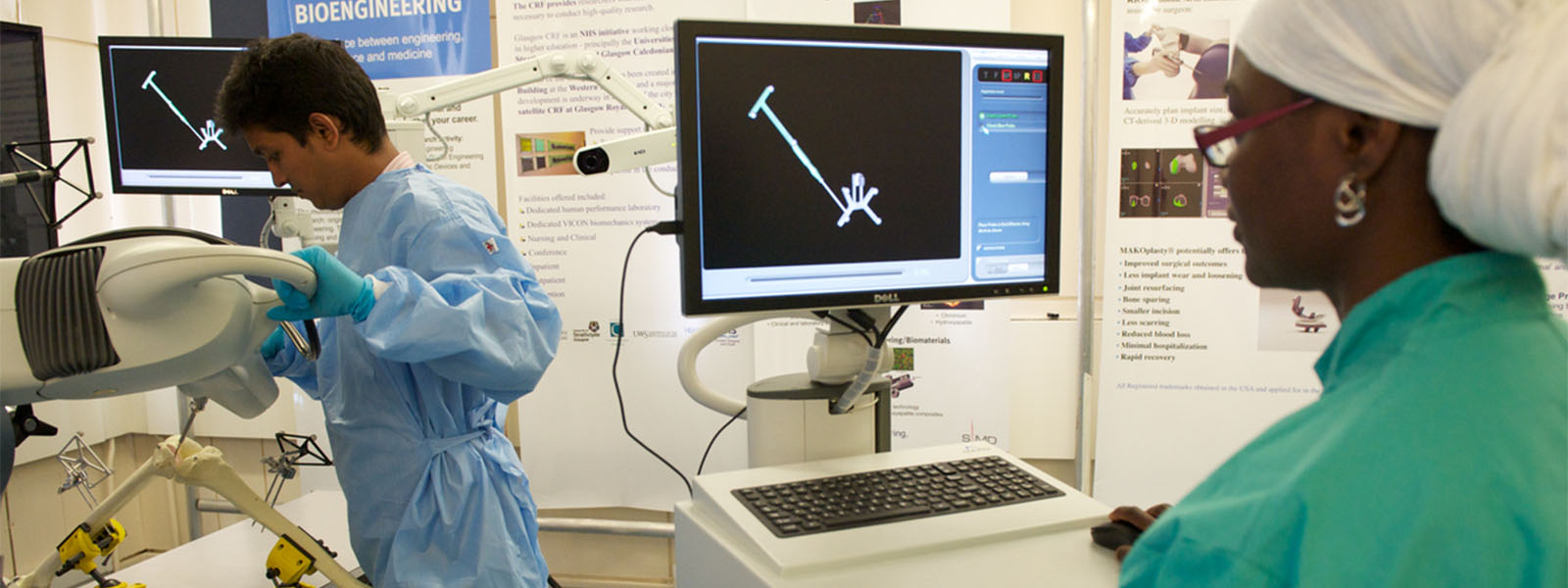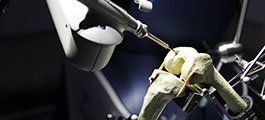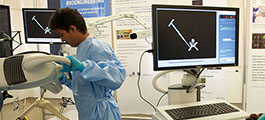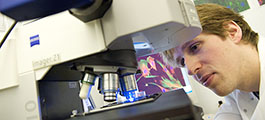We have three main areas of research:
- Minimally-invasive Diagnostics
- Sensors for Cell & Tissue engineering/Implanted Devices
- Point of Care (POC) Patient Monitors.
We're concentrating on a portfolio of projects that allow minimally invasive patient monitoring or rapid POC diagnosis. In many projects these are being coupled to new approaches in interventions or therapy.
Key members of staff - Professor Patricia Connolly, Dr Helen Mulvana, Dr Wei Yao, Dr Peter Childs, Dr David Li
Wound hydration systems
Progress on wound hydration systems has allowed us to develop a new wound bed model that simulates the conditions encountered by advanced wound dressings. A unique disposable sensor array has now been produced for use under any wound dressing, allowing monitoring without dressing removal.
In 2007, a clinical trial commenced with NHS Greater Glasgow & Clyde and confirmed that the device can detect wound hydration states. This device should have a significant impact on wound research and management.
Implanted devices
In implanted devices, we've developed a new in-vitro model for monitoring restenosis in cardiac stents with colleagues in the Strathclyde Institute of Pharmacy and Biomedical Sciences (SIPBS).
With the recruitment of Professor Gourlay, our programme of work aimed at bringing implantable intelligent sensors into medical devices has been strengthened.
Electronic engineers at the University of Strathclyde are working with us on projects which use wireless telemetry to communicate with chronically implanted sensors. Initial experiments are promising and a translational research programme monitoring a range of cardiac devices is planned with the University of Lille.
In iontophoresis (non-invasive diagnostics) diagnostically relevant concentrations of glucose and lactate can be extracted simultaneously from the skin of volunteers without blood sampling. Device trials are planned with NHS collaborators.



